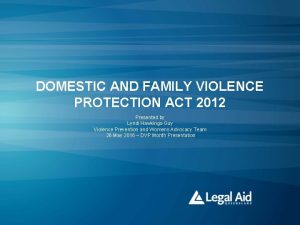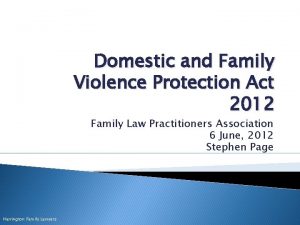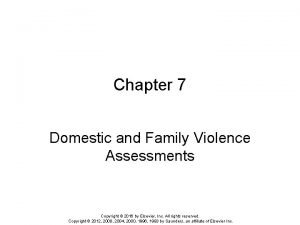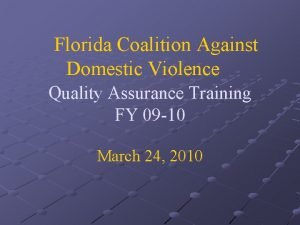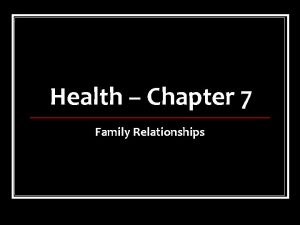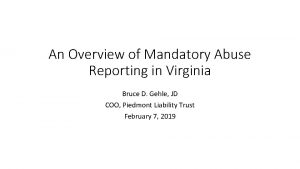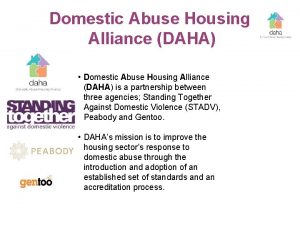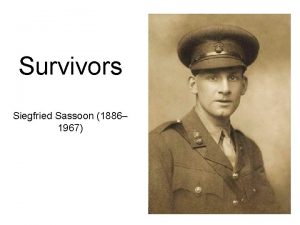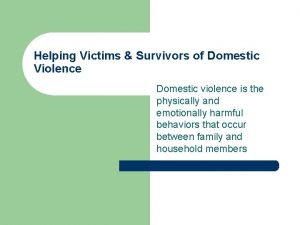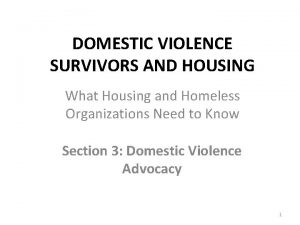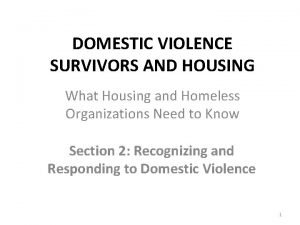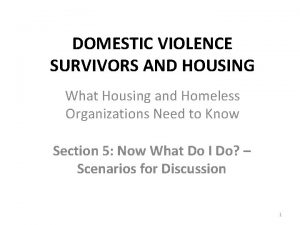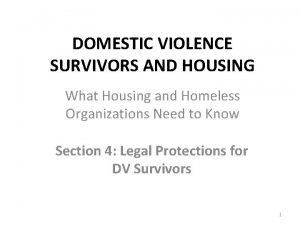DOMESTIC VIOLENCE SURVIVORS AND HOUSING What Housing and














- Slides: 14

DOMESTIC VIOLENCE SURVIVORS AND HOUSING What Housing and Homeless Organizations Need to Know Section 5: Now What Do I Do? – Scenarios for Discussion 1

SCENARIO 1 • There’s current DV! • We don’t have the resources—our location isn’t confidential! • She needs to go to a domestic violence agency, but she wants a housing program. – What are your fears? – What can you do? 2

Tips: Safety Concerns Safety Planning • Safety planning is a process, not a one-time event or check list • Safety planning is tailored to the survivor’s life and daily activities—each day may even be a little different • Ask the survivor what the abuser’s power and control tactics are • Listen to the survivors and ask what s/he needs • Survivor activities and abuser’s tactics will guide the safety planning process 3

SCENARIO 2 • We know there’s DV in that unit, but they’re both violent! – What do we do? How do we know who the victim is? 4

Tips: Talk to them–separately • You can’t rely on gender or a list of behaviors • Consider CONTEXT, INTENT, EFFECT to see who is establishing a system of power & control • Assess needs versus screening out & evicting both. • Is there actual or imminent danger to other tenants or to program/facility employees? 5

SCENARIO 3 • He assaulted her right in the parking lot! • There were lots of witnesses, but she doesn’t want to do anything about it and denies that there’s DV 6

Tips: • Remember the reasons a survivor stays in or returns to an abusive relationship: – Fear – Love – Economic Security – Cultural/community pressure – Kids need both parents – Doesn’t feel like she can make it on her own Is there actual or imminent danger to other tenants or program/facility employees? 7

SCENARIO 4 • We bifurcated the lease and evicted him, but he’s still there all the time! 8

Tips: • She may need help filing for or enforcing a Protection Order • She may have to comply with a court order for visitation with the children • He’s homeless and has no other options—she can’t say no • She misses him 9

SCENARIO 5 • She has told us that she doesn’t feel safe in her unit and wants to move • What can we do? We have no place to move her 10

Tips: • What does your model emergency transfer plan say? • If you need to develop one, consider – Your partnership with the DV program and emergency shelter while transfer in process – Hotel voucher and rental unit for belongings – Prioritize these cases for the next available unit – Seek agreements with other PHAs or housing programs 11

SCENARIO 6 • We’re trying to help her find another apartment, but she doesn’t show up for appointments or follow through with the things she needs to do 12

Tips: Trauma Impacts • • • Hyper-arousal, flashbacks, nightmares, startle reaction Memory and concentration problems Short attention span; easily distracted Problem-solving deficits Intrusive thoughts, confusion Slow reaction time Loss of sense of time and space Decreased awareness of self and others Trouble understanding abstract concepts Compromised information- processing Trouble following complex directions 13

What it May Be Mistaken For • • Apathy Poor self-worth Lack of follow-through, unreliability Disinterest in getting help Uncooperative or oppositional manner “Spaciness” Poor judgment, inability to make good choices Deeper mental health issues 14
 Domestic and family violence protection act 2012
Domestic and family violence protection act 2012 S68r family law act
S68r family law act Chapter 7 domestic and family violence assessment
Chapter 7 domestic and family violence assessment Florida coalition against domestic violence
Florida coalition against domestic violence Three r's for stopping domestic violence
Three r's for stopping domestic violence Domestic violence kink
Domestic violence kink Domestic violence in the hispanic community
Domestic violence in the hispanic community Virginia mandatory reporting law domestic violence
Virginia mandatory reporting law domestic violence Domestic abuse housing alliance
Domestic abuse housing alliance Survivors poem analysis
Survivors poem analysis Dra survivors
Dra survivors Native australian desert animals
Native australian desert animals Survivors teaching students
Survivors teaching students Calciphylaxis survivors
Calciphylaxis survivors Human act example
Human act example
